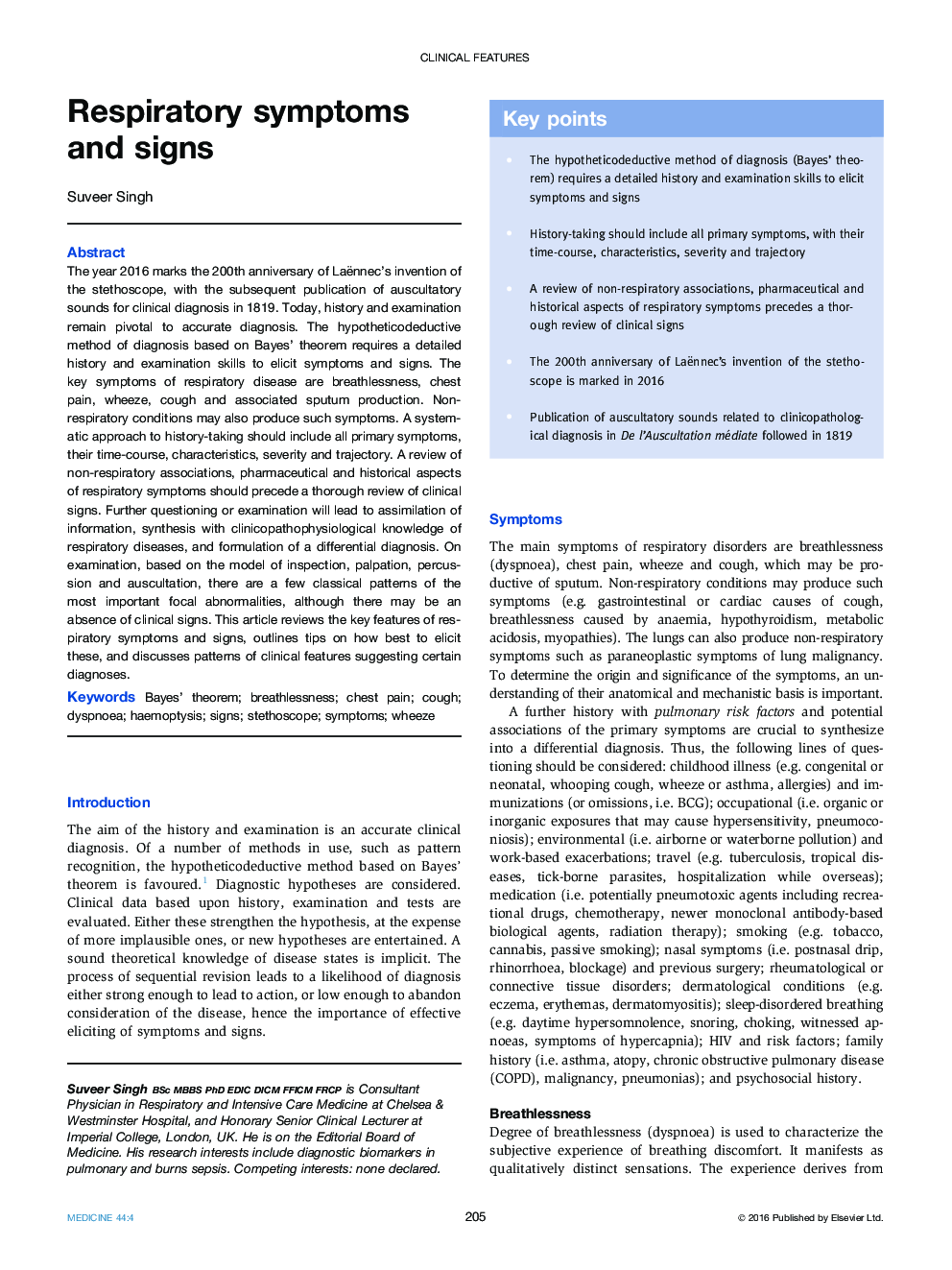| Article ID | Journal | Published Year | Pages | File Type |
|---|---|---|---|---|
| 3806139 | Medicine | 2016 | 8 Pages |
The year 2016 marks the 200th anniversary of Laënnec's invention of the stethoscope, with the subsequent publication of auscultatory sounds for clinical diagnosis in 1819. Today, history and examination remain pivotal to accurate diagnosis. The hypotheticodeductive method of diagnosis based on Bayes' theorem requires a detailed history and examination skills to elicit symptoms and signs. The key symptoms of respiratory disease are breathlessness, chest pain, wheeze, cough and associated sputum production. Non-respiratory conditions may also produce such symptoms. A systematic approach to history-taking should include all primary symptoms, their time-course, characteristics, severity and trajectory. A review of non-respiratory associations, pharmaceutical and historical aspects of respiratory symptoms should precede a thorough review of clinical signs. Further questioning or examination will lead to assimilation of information, synthesis with clinicopathophysiological knowledge of respiratory diseases, and formulation of a differential diagnosis. On examination, based on the model of inspection, palpation, percussion and auscultation, there are a few classical patterns of the most important focal abnormalities, although there may be an absence of clinical signs. This article reviews the key features of respiratory symptoms and signs, outlines tips on how best to elicit these, and discusses patterns of clinical features suggesting certain diagnoses.
